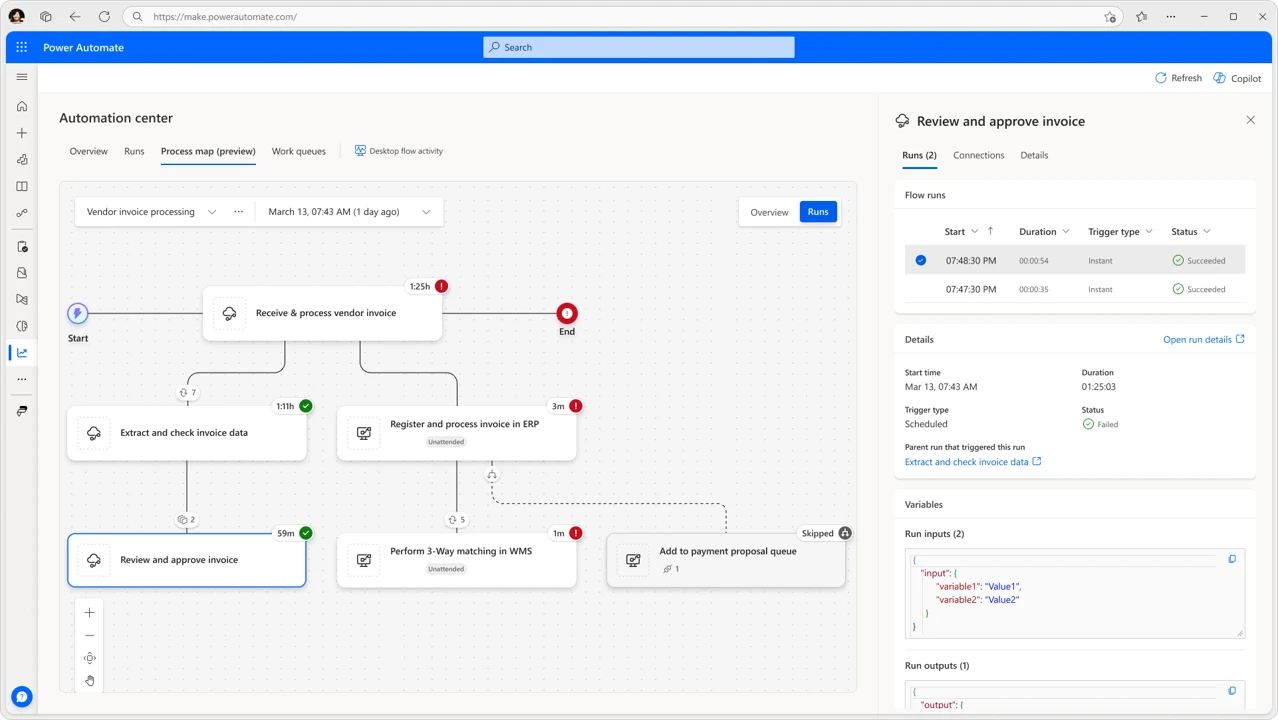We’re thrilled to announce the public preview of Process Map in Power Automate, a significant advancement for process-centric observability at scale. This feature is seamlessly integrated into the Automation Center, your hub for end-to-end automation monitoring and management in Power Automate.

What is the Process Map?
The Process Map is designed to enhance process-centric troubleshooting and monitoring in Power Automate by providing increased visibility and efficiency. It offers a detailed, end-to-end view of a process that’s managed by a parent orchestrating flow, showing all of the associated child and desktop flows. The map also recognizes structural flow elements, such as conditions, and displays flows that didn’t execute due to specific conditional logic or upstream errors. This is critical for understanding how a problem in one part of the process can affect other parts and assists in taking appropriate countermeasures to address issues.
Key benefits:
- Accelerated troubleshooting: Quickly identify and resolve issues with an end-to-end, process-centric view that includes contextual information on runs, connections, and design-time aspects.
- Comprehensive visibility: Gain full transparency into your automation processes, including flows that were skipped or missed due to conditional logic or upstream issues.
- Enhanced impact analysis: Understand and analyze how issues affect the entire process, facilitating faster recovery and implement effective countermeasures.
- Stronger collaboration: End-to-end process visibility enables faster, context-rich communication with impacted teams, accelerating recovery and driving continuous improvement.
Key features
- Runs view: Displays the main flow run that orchestrates the process and its child runs, enabling users to track execution, identify issues, and optimize processes.
- Overview view: Provides a design-time process hierarchy view with connected subprocesses, offering quick insights and serving as the future home for aggregated process data and configurations.
- Runs tab integration: We’ve enhanced the flow runs page with new run row hover options. New icons let you create or view process maps for the selected process run and its child runs.
How to get started
This feature is being rolled-out now and you can test it today in the US preview region. Further details are available in the Process Map documentation.
The post Announcing the Process map public preview in Power Automate appeared first on Microsoft Power Platform Blog.










